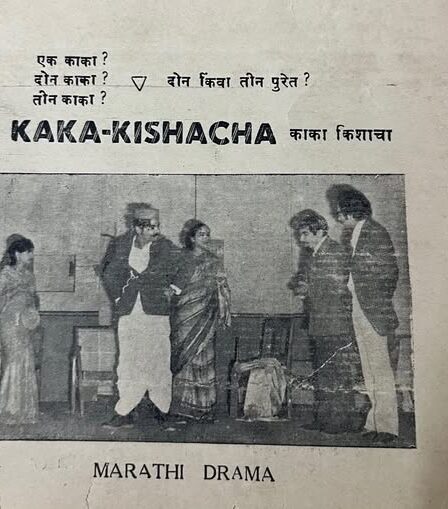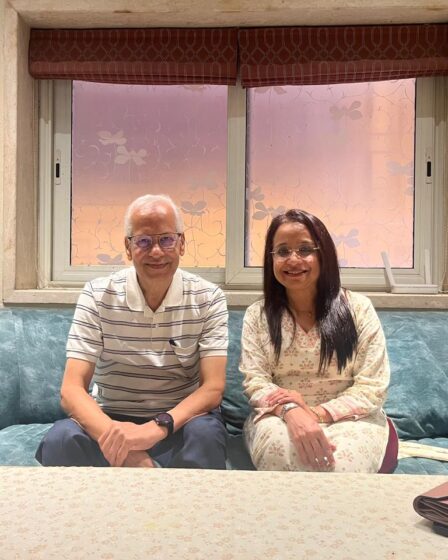It was 1974 — a year when Sevagram went to sleep early, and the nights belonged to the crickets and a handful of restless medical students in the JN Boys’ hostel. MGIMS was still young then. The world had no screens or smartphones to stare at, and evenings found purpose on a small wooden stage …
Sevagram
An Evening in Sevagram, 1974
Yesterday evening, in the quiet of the MGIMS library, I found Sushruta—the student magazine from 1974. Its cover was worn. The pages were yellow, some torn at the edges, faded with age. They carried the smell of time. As I turned them, I reached the Marathi section edited by Dr. Narayan Daware (class of 1971), …
Babulal: Bhamashah of Sevagram
If you ask any MGIMS student from the 1970s or ’80s about their Dean, or even most of their professors, the memories may be hazy. Names of many classmates might have slipped away too. But mention Babulal, and the recollections come rushing back. In those days, Babulal’s canteen was their 𝘢𝘥𝘥𝘢, their little world in …
A Monsoon Morning in Kolkatta
Yesterday, I was in Kolkata for just a few hours. I called her on the phone and told her I was in Alipore. “Alipore, sir?” she said, “I’ll come right over.” She hadn’t even finished rounding on her patients, but she made time to meet me—for a single cup of tea. I hadn’t realised how …
The Man Behind the Lens
It was 1970. A restless, curious man walked into the MGIMS campus, a camera bouncing on his chest and his eyes already chasing the light. The college was still young, still growing. But Surendra Gurjar, newly hired and unsure, already saw stories. Stories in light, in shadows, in faces. He didn’t pose people. He didn’t …
A Lumbar Pucture and a Standing Ovation
Bombay, 1975. The air was salty, the streets bustling, and a young doctor stood quietly outside the gates of St. George’s Hospital. Fresh out of internship at MGIMS, Sevagram, he had no roadmap for his future. Sevagram did not offer postgraduate training—its founder Dr. Sushila Nayar wanted her students to serve in villages. But government …
The First Building Blocks of MGIMS ( Part 5)
In 1969, Dr. P.L. Vaishwanar—Project Officer and Head of Physiology at GMC Nagpur—arrived in Sevagram to help build India’s first rural medical college. He wasn’t focused only on bricks and mortar. He wanted to build people. Before the college could welcome students, it needed a team—not just doctors and professors, but technicians and attendants who …
A Train Ride that Changed Everything
𝗚𝗲𝗻𝗲𝘀𝗶𝘀 𝗼𝗳 𝗠𝗚𝗜𝗠𝗦: (𝗣𝗮𝗿𝘁 𝟰) In my last post, I shared how Dr. Sushila Nayar secured approvals from the central and state governments to start MGIMS in 1969—and how, against all odds, she managed to get an unexpected ₹2 crore grant from USAID. For a moment, it felt like the hardest part was over. But …
Even a Policeman’s Son can become a Doctor
How did students get into MGIMS five decades ago? I asked a senior professor of pharmacology—an alumnus of the MGIMS Class of 1970—and he shared his story. It’s a charming throwback to simpler times, full of serendipity, sincerity, and a touch of destiny. 𝙀𝙫𝙚𝙣 𝙖 𝙋𝙤𝙡𝙞𝙘𝙚𝙢𝙖𝙣’𝙨 𝙎𝙤𝙣 𝙘𝙖𝙣 𝙗𝙚𝙘𝙤𝙢𝙚 𝙖 𝘿𝙤𝙘𝙩𝙤𝙧 The year was 1969. …
The Birth of a Dream ( MGIMS Stroy Part 3)
In my last post, I told you how deputy prime minister Morarji Desai in 1968 agreed to fund a medical college in rural India. But there was a catch—a formidable one. The hospital would need to raise 25% of the funds itself. Not just once, but every year. Forever. The formula was simple on paper: …


